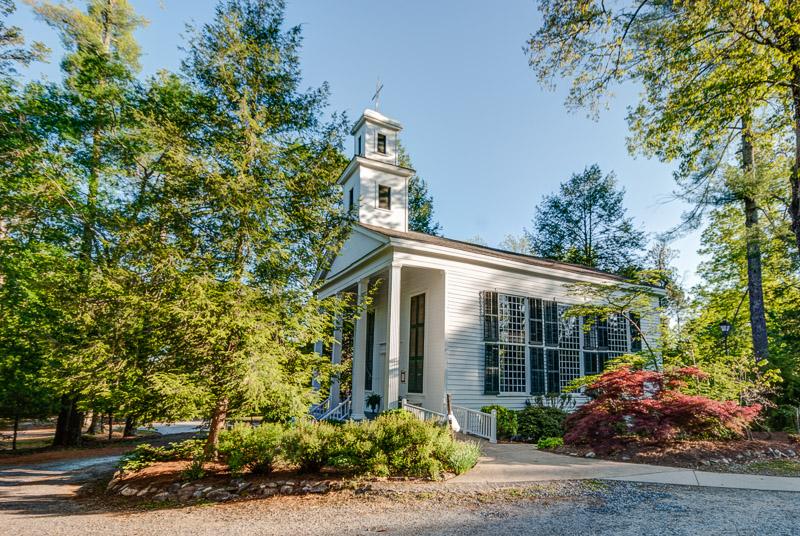Grace Episcopal (Habersham County, Ga.)
Grace-Calvary Episcopal Church was established in 1838 as Grace Protestant Episcopal Church. It was the sixth Episcopal parish to be established in Georgia. The church building, virtually unchanged today, is the second oldest Episcopal Church building in Georgia. Although an "Old School" Presbyterian church had been established in Clarkesville in 1832, many Presbyterians attended church with the Episcopalians until 1849 when the Clarkesville Presbyterian Church building was completed. 1847 church records show that one individual was both a member of the Grace Episcopal vestry and a trustee of the Presbyterian Church. Grace Protestant Episcopal Church was founded for a specific purpose: so that there would be enough parishes in Georgia for the state to have its own bishop. The Diocese of Georgia had been established in 1823, but until 1840 it was overseen by the Bishop of South Carolina. In 1838, there were only five Episcopal parishes in Georgia: Christ Church, Savannah; Christ Church, St. Simon's Island; St. Paul's Church, Augusta; Christ Church, Macon; and Trinity Church, Columbus. There was no Episcopal church in Atlanta, which was still called Marthasville. The idea of establishing an Episcopal parish in far-off Clarkesville came from Rev. Edward Neufville, rector of Savannah's Christ Church, who suggested that the addition of a sixth parish would allow Georgia to elect its own bishop. According to the church history, an acre lot for the present church building was purchased in 1839, and construction of the building began that year. Subscriptions were called for, and $1,335 was raised to fund the construction. Unfortunately, construction was slowed by lawsuits and drought. Records show that the rivers were so low that year that the water-powered saw mill on the Soque River could not function. The original Grace Church building—of which the frame structure survives essentially unaltered today—is a superb example of Greek-Revival architecture, characterized in front by tall pillars and a portico. It is the second oldest surviving Episcopal Church building in Georgia; Christ Church in Savannah is one year older. Grace Church survives practically unchanged, which is not true of the Savannah church. The building retains its original box pews (or slips) with doors to shut out drafts and other patrons who had not paid for the privilege. The tall windows have most of their original glass, which was shipped in cylinders from Augusta or Athens; the twelve window sashes each contain 48 panes. The upstairs gallery, where the choir sits today, originally had benches for the slaves who had traveled with their masters as house servants. One of the church's main treasures is the pipe organ in the gallery, built for the church by Henry Erben of New York City in 1848. Erben is considered the outstanding organ builder of the period, despite his irascible personality—he once pushed the organist at New York City's Trinity Church down the front steps of that church when they didn't see eye to eye over the organ Erben was building. It is the oldest working pipe organ in Georgia, and it retains its baroque tone and nineteenth-century pitch. It arrived in pieces with directions for assembly. It turned out to be one foot too tall, so a pit was created for the organ in the middle of the gallery. The organ was completely restored in 1988, and is still played every Sunday. The church's high pulpit is typical of the period when southern Episcopal Churches stressed the spoken message over the Eucharist and liturgy. Eucharist was usually celebrated no more than once a month.
-
 Still image
Still imageGrace Episcopal (Habersham County, Ga.)
Clegg, RandyThis record contains 8 images of Grace Episcopal.